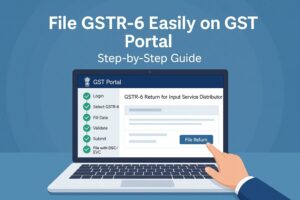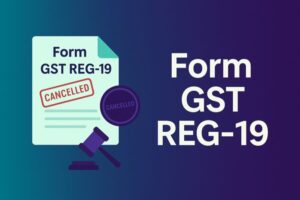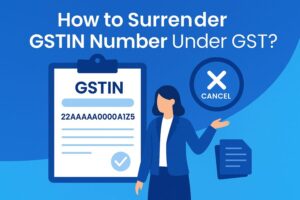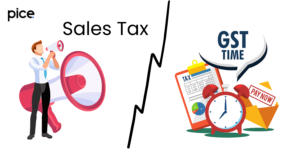When Invoice to be raised under GST?
- 11 Dec 24
- 9 mins

When Invoice to be raised under GST?
- What is a GST Invoice?
- Who Should Issue GST Invoice?
- What Are the Mandatory Fields a GST Invoice Should Have?
- By When Should You Issue Invoices?
- Can You Revise Invoices Issued Before GST?
- Should an Invoice Be Issued for Advance Payment Received?
- Time of Supply of Goods and Services
- Raising Invoice Copies
- Significance of GST Invoice
- Reasons for Not Issuing a Tax Invoice
- Endorsement on Invoice Under GST for Exports
- HSN/SAC Code Under GST
- Conclusion
Key Takeaways
- GST Invoice Essentials: Must include invoice details, GSTINs, HSN/SAC codes, taxable value, and tax rates.
- Timely Issuance: Raise invoices as per GST rules to avoid compliance issues.
- Special Invoice Types: Includes bills of supply, reverse charge invoices, and credit/debit notes.
- HSN/SAC Codes: Digits required vary by turnover and import-export status.
- Compliance Importance: Ensures ITC claims, proper tax payment, and adherence to GST laws.
Suppliers registered under the GST regime need to issue GST-compliant invoices to the buyers detailing the transactions of goods and services. A GST-compliant purchase invoice is a legal document that helps recipients claim an input tax credit (ITC) to reduce the outward tax liability. Here is a comprehensive guide on when an invoice is to be raised under GST and other important details about a GST invoice.
What is a GST Invoice?
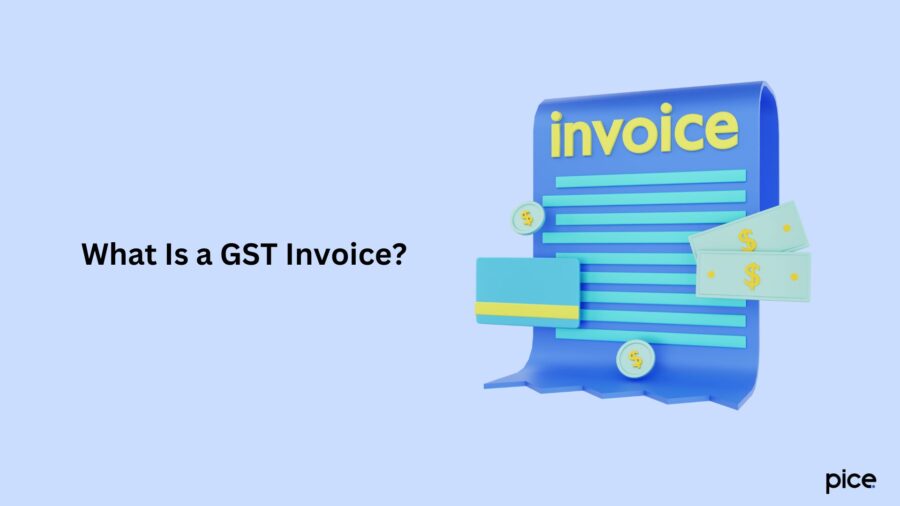
A valid GST invoice or bill enlists the transactions between a supplier and the recipient. It is a document that suppliers issue to their customers, mentioning the list of goods supplied and services provided. A typical tax invoice includes the units, rates, and total amount of payment with respect to supplies, making it an evidence of transactions.
Who Should Issue GST Invoice?
A GST-registered business should provide a GST invoice to his/her customer for the sale of goods and services. Further, you need to ask your vendors to provide GST-compliant invoices for a vendor payment to claim input tax credit (ITC).
What Are the Mandatory Fields a GST Invoice Should Have?
Here are the mandatory fields that a GST invoice needs to contain:
- Customer name
- Invoice details such as invoice serial number and invoice date
- Shipping and billing address
- Taxpayer’s and customer’s GSTIN, if they are registered under the GST regime
- Place of Supply
- HSN code for goods and SAC code for services
- Item description, quantity of items and units
- Total value of items
- Taxable value, applicable rate of GST (CGST and SGST or IGST) and discounts, if any
- If GST is payable under a reverse charge basis
- Supplier’s signature
However, if the recipient is not registered under GST and the invoice value is greater than ₹50,000, include the following factors:
- Name and address of the recipient
- Address of delivery
- State name and state code
By When Should You Issue Invoices?
Here are the due dates for issuing a GST tax invoice under the GST Act:
- Goods (Normal Case): On or before the date or time of removal or delivery
- Goods (Continuous Supply): On or before the date of issue of account statement or payment
- Services (General Case): Within 30 days from the date of supply of service
- Services (Banks and NBFCs): Within 45 days from the date of supply of services
What Are the Other Types of Invoices?
The following are the other types of invoices under GST regulations apart from a regular invoice:
a. Bill of Supply
When a seller cannot charge GST to the buyer, the seller has to issue a bill of supply, which is similar to a valid invoice. The situations where a seller needs to issue a bill of supply are as follows:
- When the registered supplier sells exempt goods or services
- If the registered person opts for the composition scheme
Invoice-cum-bill of Supply
A registered supplier has to issue a single invoice-cum-bill of supply to their customer if the supplier sells taxable as well as exempted goods or services.
b. Aggregate Invoice
A seller can issue an aggregate or bulk invoice to an unregistered person if the value of multiple invoices does not exceed ₹200 in a day. For instance, as a seller, you may issue invoices amounting to ₹70, ₹100 and ₹120 on a single day. However, you can also choose to issue a single invoice amounting to ₹290, known as aggregate or bulk invoicing.
c. Reverse Charge Invoice
If a person liable to pay taxes under the Reverse Charge Mechanism (RCM) receives goods or services, he/she needs to issue a reverse charge invoice mentioning RCM on the invoice. The customer further has to issue a tax payment voucher when he makes payments to the supplier.
d. Debit and Credit Note
A supplier issues a debit note to a buyer when the payable amount increases as follows:
- When the tax invoice value is less than the value of tax payable the supplier should charge.
- If the tax value is lower than the amount that a supplier should charge.
A seller issues a credit note when the value of an invoice decreases as follows:
- When the value of taxable supplies is higher than the value that a supplier has charged.
- If the tax value is higher than the tax charged by the supplier.
- When a buyer returns goods purchased to the seller.
- If the services are deficient.
Can You Revise Invoices Issued Before GST?
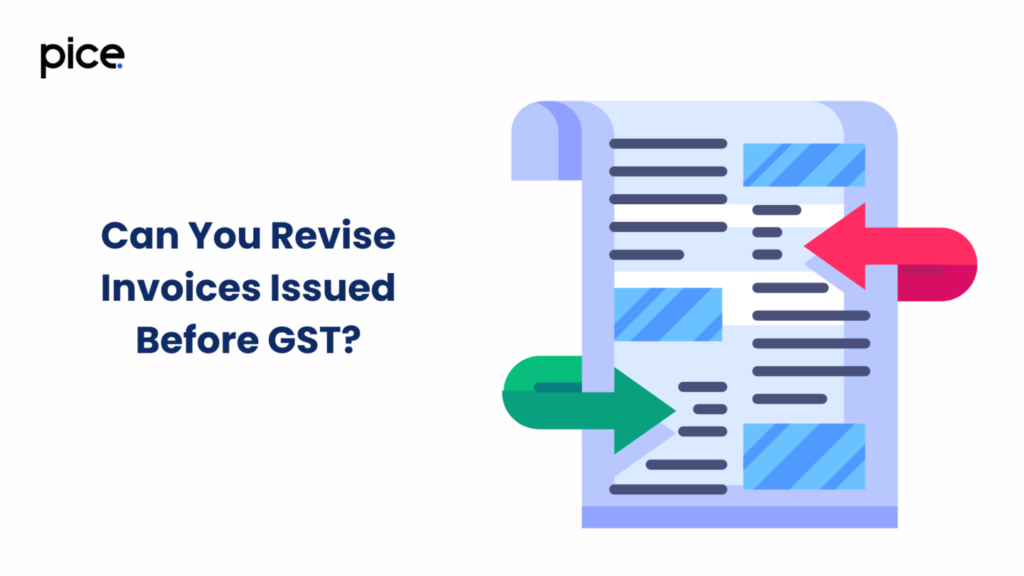
Invoices issued prior to GST can be revised. The GST regime mandates dealers to apply for provisional registration prior to receiving the permanent registration certificate. Invoices issued between the date of GST implementation and the date of issue of the GST registration certificate should follow the rule mentioned above.
If you are a dealer, ensure to revise invoices against the invoices that you issued previously. However, you need to issue the revised invoice within 1 month from the date of issue of the certificate of registration.
Should an Invoice Be Issued for Advance Payment Received?
If a supplier receives advance payment for the supply of services and goods, he/she needs to issue a GST receipt voucher. On the other hand, if the seller does not provide goods and services, and the amount is refunded to the customer, the seller needs to issue a GST refund voucher. However, tax applies on the advance payment for the supply of goods and services after issuance of the receipt voucher.
Time of Supply of Goods and Services
\The date on which a registered person under GST is liable to pay GST is referred to as the time of supply. Here is the time of supply for goods and services:
Time of Supply for Goods:
The time of supply is the earlier of the following dates:
- The date on which the supplier issues the invoice. However, if the supplier fails to issue the invoice on the due date, the last date for issuing the invoice is the time of supply.
- Supplier’s payment receiving date.
Time of Supply for Services:
The time of supply is the earlier of the dates mentioned below:
- The date on which the supplier issues the invoice. Notably, the supplier needs to render the services within 30 days from the service provisioning date.
- Date of receipt of payment by the supplier
However, if the supplier faces challenges in determining the date of supply, he/she should consider a date before filing GST returns or the date of payment of GST.
Raising Invoice Copies
Suppliers supplying goods need to maintain triplicate copies of invoices as follows:
- Original tax invoice copy for the recipient
- Duplicate copy for the transporter
- Triplicate copy for the supplier
In contrast, suppliers supplying services need to keep duplicate copies of invoices as follows:
- Original invoice copy provided to the recipient
- Duplicate copy maintained with the supplier
Significance of GST Invoice
Here is the importance of GST invoice:
- The GST invoice helps recipients optimise ITC claims.
- A GST invoice helps determine the time of supply.
- GST invoices help determine the place of supply.
Reasons for Not Issuing a Tax Invoice
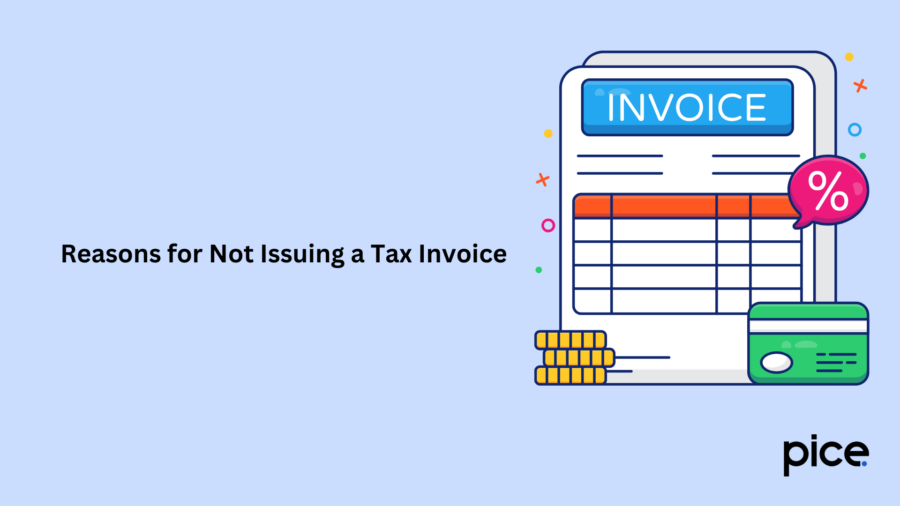
A registered person does not have to issue a tax invoice under the following conditions:
- The recipient is not a registered person.
- There is no invoice requirement on the part of the recipient.
Endorsement on Invoice Under GST for Exports
Exports of goods and services and supply of goods and services to SEZ units or developers need endorsement on the invoice for authorised operations as follows:
- With tax payment
- Without tax payment under bond or LUT
A supplier needs to mention the text below on the conditions mentioned above:
- Supply for export or supply to SEZ units or SEZ developers for authorised operations on payment of integrated tax
- Supply for export or supply to SEZ developers or SEZ units for authorised operations under bond or LUT (Letter of undertaking) without payment of integrated tax
HSN/SAC Code Under GST
The World Customs Organisation (WCO) develops Harmonised System of Nomenclature (HSN) codes to maintain uniformity in goods classification. On the other hand, the Central Board of Indirect Taxes and Customs develops Service Accounting codes (SAC codes) to ensure the unique classification of services.
Here are the requirements for using HSN/SAC code:
| Aggregate Annual Turnover in the Previous Financial Year | Mandatory Number of Digits of HSN or SAC Code on a GST Invoice |
| Import-export dealer (regardless of the turnover limit) | 8-digit HSN code |
| Turnover exceeding ₹5 crore | 6-digit HSN code |
| Turnover up to ₹5 crore | 4-digit HSN code |
Conclusion
Suppliers knowing when an invoice is to be raised under GST can adhere to GST norms and regulations for business compliance. Raising the invoice at the right time is necessary to avoid delayed payment of the invoice amount by the recipient. It helps registered suppliers and customers comply with Indian tax laws under the GST regime and the Indian finance ecosystem.
💡If you want to streamline your payment and make GST payments, consider using the PICE App. Explore the PICE App today and take your business to new heights.
 By
By 






